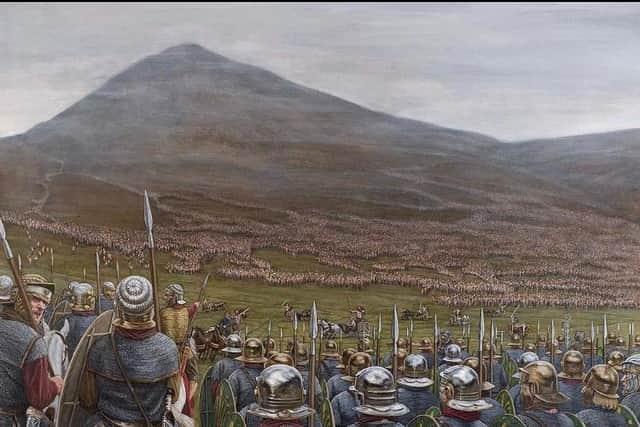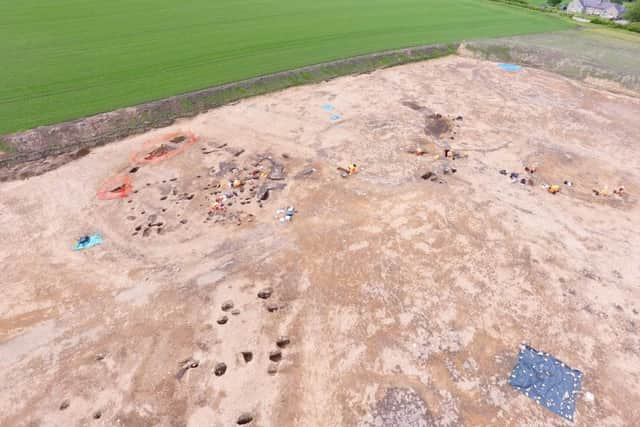Iron Age village and metal-working site 'destroyed after clash with Romans' discovered at Scottish quarry
Archaeologists have found 25 Iron Age buildings at Lochinver Quarry near Elgin, including the remains of roundhouses, several iron furnaces and storage structures, with the industrial site the first of its kind discovered.
Intriguingly, two cauldrons were found buried at the quarry – one inside the other – with it believed they may have been placed in a pit at the end of the first century AD to conceal the valuable objects. Burning of wooden buildings at the site is also known to have taken place.
Advertisement
Hide AdAdvertisement
Hide AdArchaeologists have suggested the fires and burial of the “rare” artefacts may have taken place around the the time of the Battle of Mons Graupius, which was reportedly fought in 83 or 84AD between the Romans and Caledonians and resulted in victory for the invaders.
A spokesman for Archaeological Research Services Ltd, which led the excavation, said: “The radiocarbon dating of their burial indicates they were placed in the pit around the end of the first century AD, around the same time of the battle of Mons Graupius.
"Elsewhere across the site there is clear evidence for in-situ burning of the various wooden buildings. Taken together with the need to bury valued possessions such as the cauldrons, this could potentially evidence the impact of the Roman invasion of Scotland under Agricola and its effect on local communities following the battle of Mons Graupius – as described by the Roman writer Tacitus.”
Tacitus was the son-in-law of Agricola, the governor of Britain from 77 to 83-84AD. His account of Mons Graupius is the only written evidence of the battle, which has long been challenged.


He claimed 30,000 Caledonians and supporting tribes fought 8,000 Romans, with only 360 of the invaders killed, with Agricola leaving shortly after the battle with no northerly advancement of the Roman line achieved.
The exact location of the clash is not known, with Raedykes near Stonehaven, Bennachie near Inverurie and Gask Ridge among possibilities raised over time.
Further analysis of the finds will now get underway to piece together activity at the site.


Dr Fraser Hunter, principal curator of Iron Age and Roman collections at National Museums Scotland, described the scale of the metal-working operation near Elgin as “absolutely remarkable”.
Advertisement
Hide AdAdvertisement
Hide AdHe said: “The exciting results from the Lochinver excavations will make us rethink our views of Iron Age industries. Iron was a fundamental raw material for tools and weapons, but its production on this scale is absolutely remarkable, far beyond what any one settlement would need. It seems the first industrial revolution around the Moray Firth took place in the Iron Age.”
A range of buildings are known to have covered the sites, with some believed to be large workshops for metal working activities.
A series of Bronze Age buildings was earlier discovered at the quarry, with the site likely to have been occupied in stages over 2,000 years.
The finds were made during pre-quarrying investigations at the site, owned by Tarmac, with the archaeological investigation assisted by Aberdeenshire Council.
Comments
Want to join the conversation? Please or to comment on this article.
